Are you planning a trip to Italy and can’t decide between Venice and Milan? You’re not alone. These two iconic cities offer very different experiences for travelers.
Venice is a romantic wonderland of canals and historic architecture, while Milan uses modern energy as a fashion and business hub. Both cities have their unique charms, but Venice tends to be better for short visits focused on sightseeing, while Milan is ideal for longer stays and those interested in shopping and nightlife.
Venice’s maze-like streets and dreamy canals make it feel like stepping into a fairytale. You can spend days exploring its winding alleys, admiring stunning churches, and gliding along waterways in gondolas.
Conversely, Milan boasts world-class museums, high-end shopping, and a vibrant food scene. Its mix of historic and contemporary attractions appeals to many types of travelers.
The best choice depends on your interests and travel style. Venice shines for its unmatched beauty and rich history but can feel crowded with tourists. Milan offers a more authentic slice of Italian city life, with fewer crowds but less of that picture-perfect charm.
Key Takeaways
- Venice is ideal for short trips and sightseeing, while Milan suits longer stays and shopping.
- Both cities offer unique experiences: Venice for romance and history, Milan for fashion and modernity.
- The best time to visit depends on your preferences, but spring and fall offer pleasant weather in both cities.
History and Culture
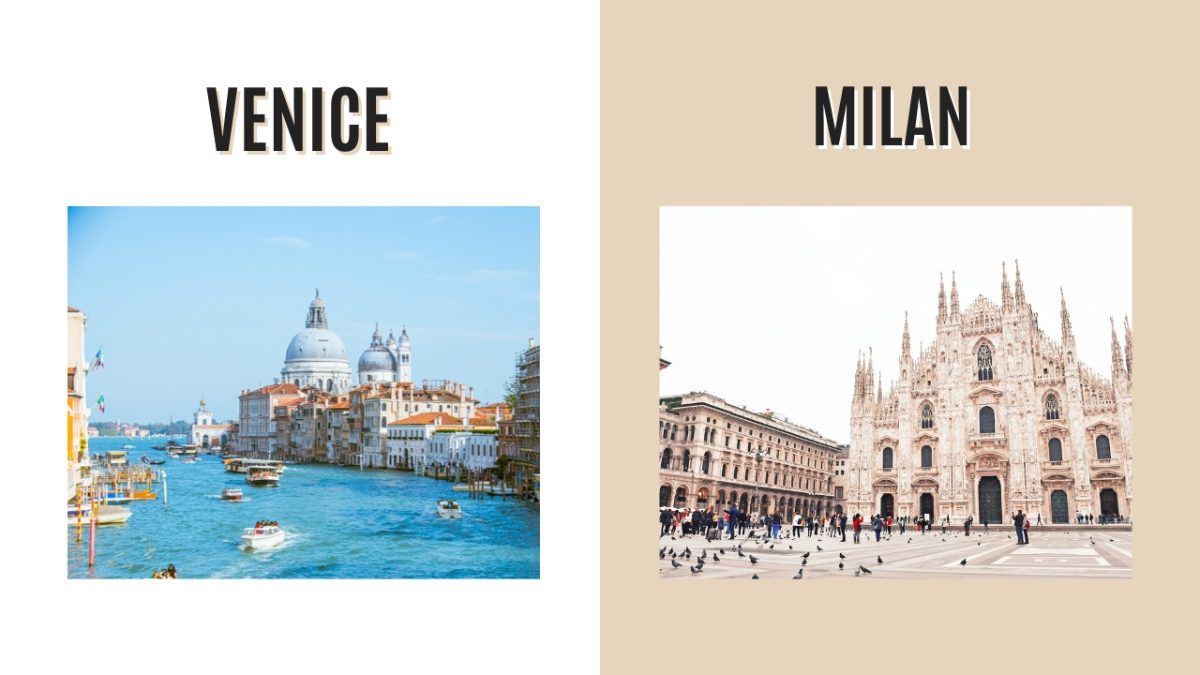
Venice and Milan have rich histories and vibrant cultures that shaped Italy. Over the centuries, these cities played key roles in art, trade, and politics.
Historic Overview of Venice and Milan
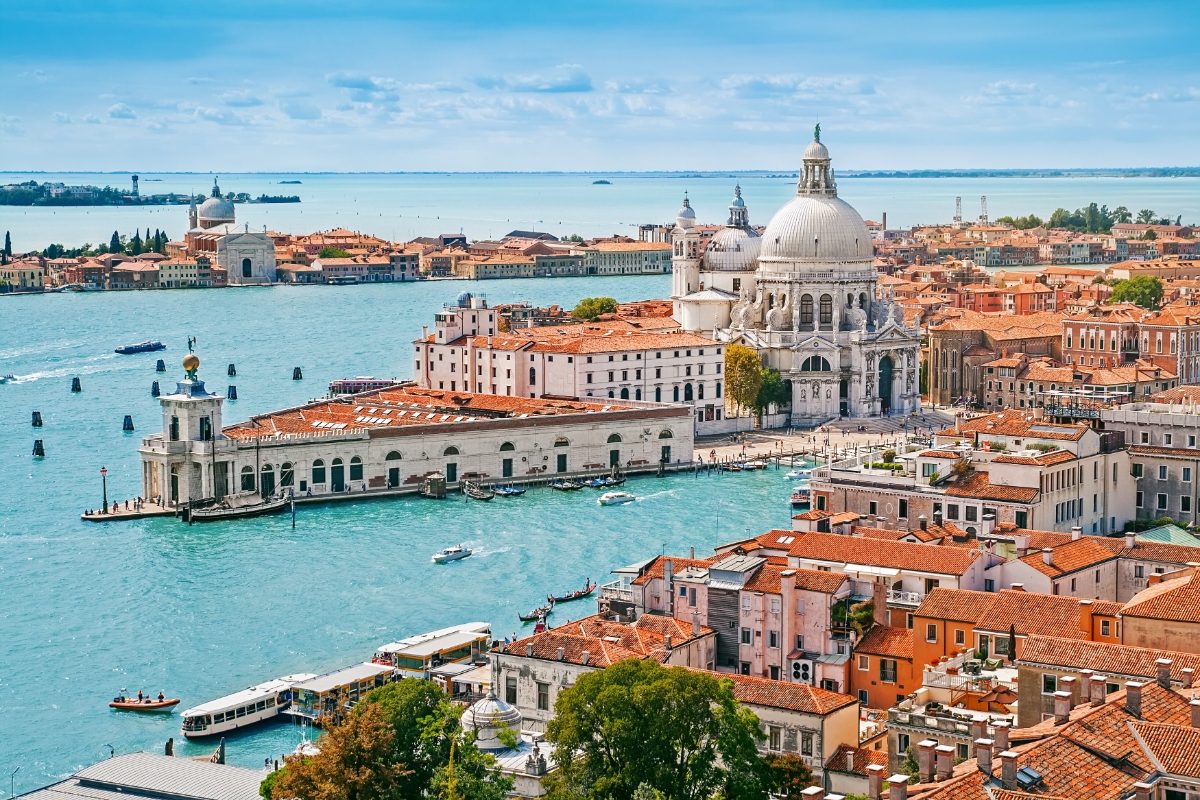
Venice rose to power as a maritime republic in the Middle Ages. The city’s unique canal system and stunning architecture reflect its past as a wealthy trading hub. St. Mark’s Basilica and the Doge’s Palace showcase Venice’s former glory.
Milan’s history spans ancient Roman times to the Renaissance. In the 15th century, it was an important center under the Sforza family.
Leonardo da Vinci lived in Milan during this period, creating masterpieces like The Last Supper. The imposing Sforza Castle still stands as a symbol of Milan’s past power.
Cultural Significance and Traditions

Venice is famous for its Carnival celebrations and masked balls. The city’s glassmaking tradition on Murano Island dates back centuries, and gondolas remain an iconic part of Venetian culture.
Milan shines as a global fashion capital. The city hosts major events like Milan Fashion Week.
La Scala Opera House is a temple to Italian musical culture. Milan’s aperitivo tradition is beloved by locals and visitors alike.
Both cities boast world-class museums and art. Venice’s Gallerie dell’Accademia houses Renaissance treasures.
Milan’s Pinacoteca di Brera displays works by Italian masters. The cities’ distinct foods reflect their unique histories and locations.
Geography and Layout
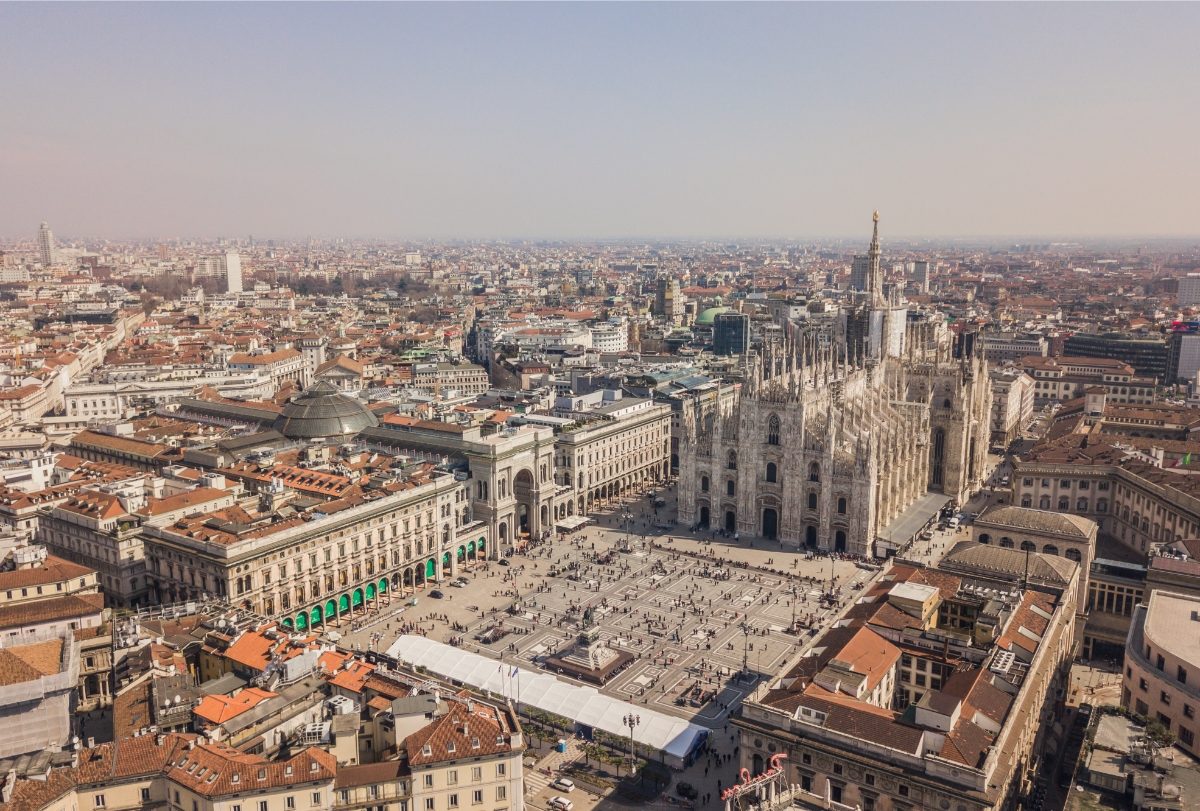
Venice and Milan have unique layouts that shape the visitor experience. Each city’s geography creates a distinct atmosphere and impacts how you get around.
Navigating Venice’s Canals

Venice is a lagoon off the Adriatic Sea. It consists of 118 small islands connected by over 400 bridges. The Grand Canal, which snakes through the city in an S-shape, is the main waterway for getting around.
No cars are allowed in Venice. You’ll walk or take a water bus called Vaporetti.
The pedestrian areas consist of narrow alleys and small squares called campi. It’s easy to get lost, but that’s part of the fun.
Gondolas glide along smaller canals. A 30-minute ride costs about €80. It’s pricey but romantic, especially at sunset.
Exploring Milan’s Districts
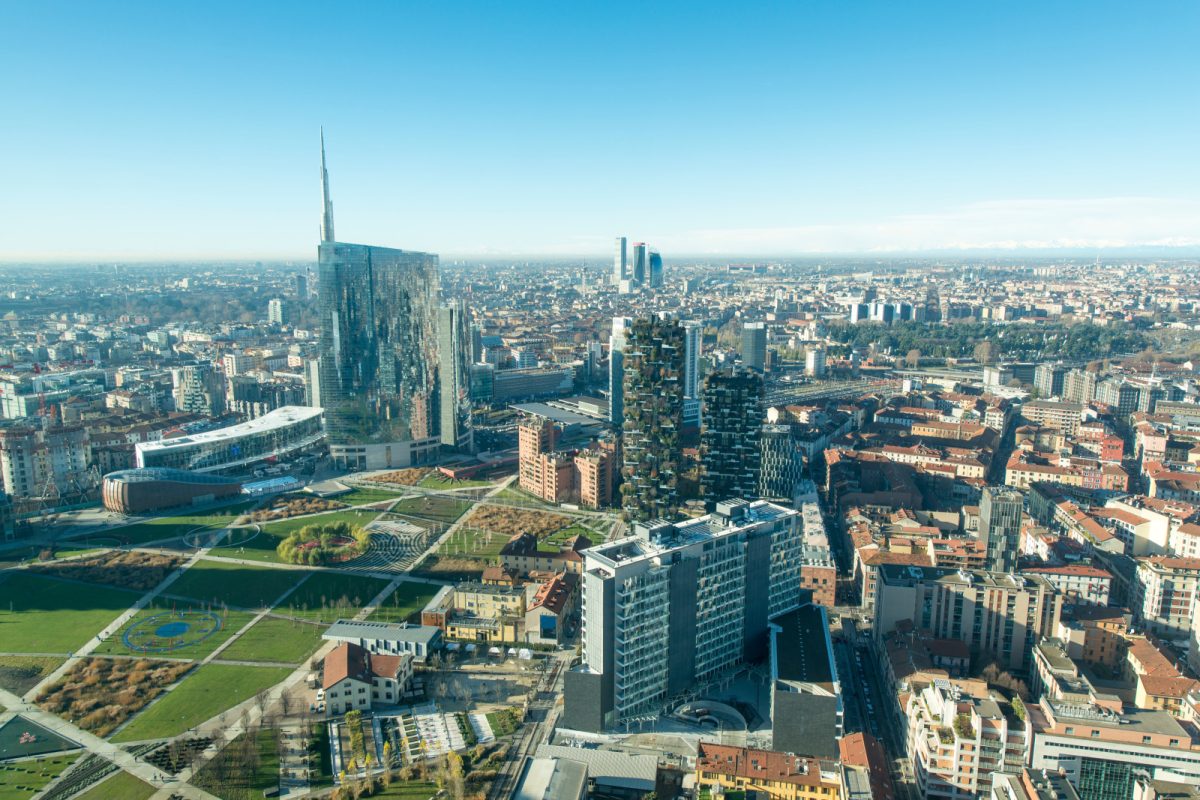
Milan spreads out on flat land in northern Italy. It has a more typical city layout with streets and neighborhoods. The city center, called Centro Storico, is where you’ll find most of the sights.
The Navigli District is known for its canals, which once transported goods. Now, it’s a trendy area with many bars and restaurants.
Milan has an efficient metro system with four lines. Tickets cost €2 for a single ride. Trams and buses also run through the city.
Walking is a great way to see Milan. The city is less spread out than Venice, and you can easily stroll between the major sights in the center.
Iconic Attractions and Sightseeing
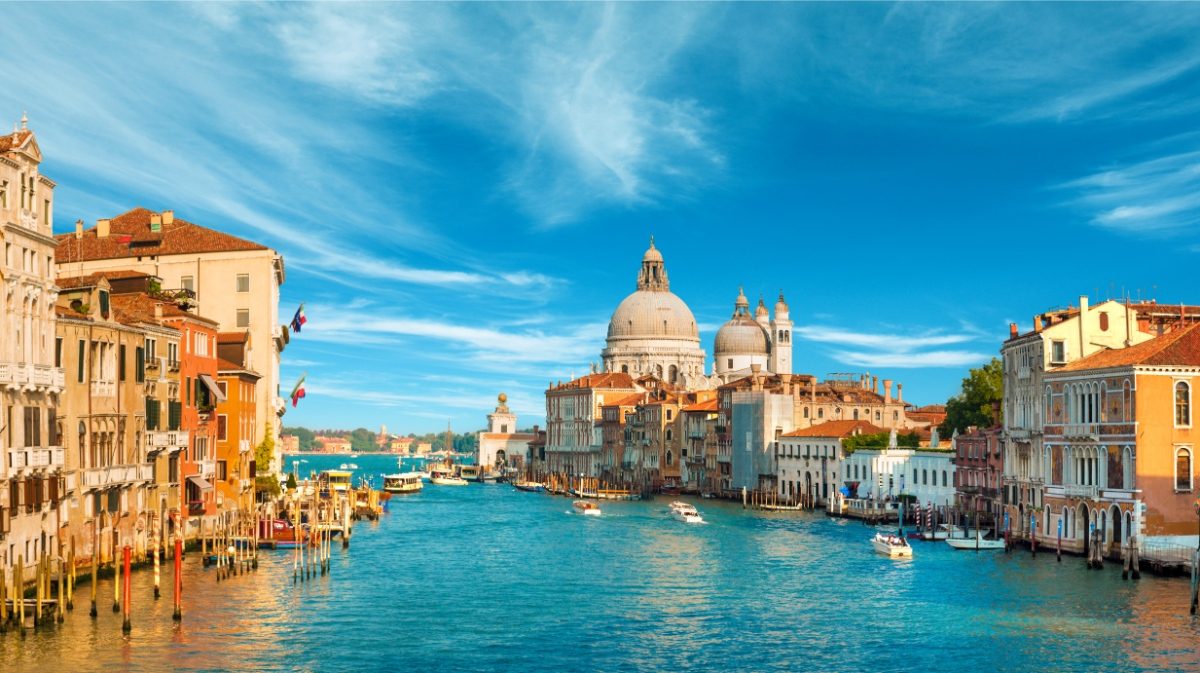
Venice and Milan both offer amazing sights that wow visitors. Each city has its special landmarks that show off Italian history and culture.
Venice’s Must-See Landmarks
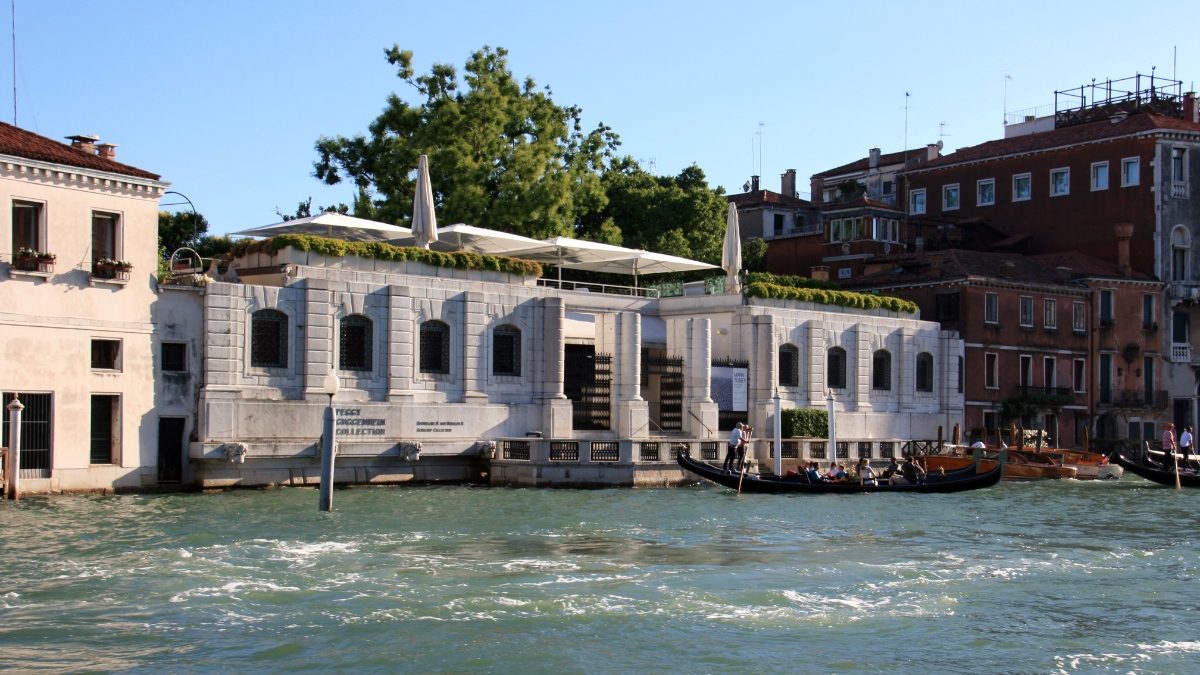
St. Mark’s Square is the heart of Venice. It’s home to St. Mark’s Basilica, a stunning church with golden mosaics inside.
Next door is the Doge’s Palace, where Venice’s rulers once lived. You can tour the fancy rooms and walk across the famous Bridge of Sighs.
The Grand Canal is Venice’s main waterway. A gondola ride is a classic Venice experience. It costs about €80 for 30 minutes—pricey but worth it! The Rialto Bridge is the oldest bridge over the canal and has great views.
Art lovers shouldn’t miss the Peggy Guggenheim Collection. This modern art museum has works by Picasso, Dalí, and more. It’s in Peggy’s old palazzo on the Grand Canal.
Milan’s Renowned Attractions
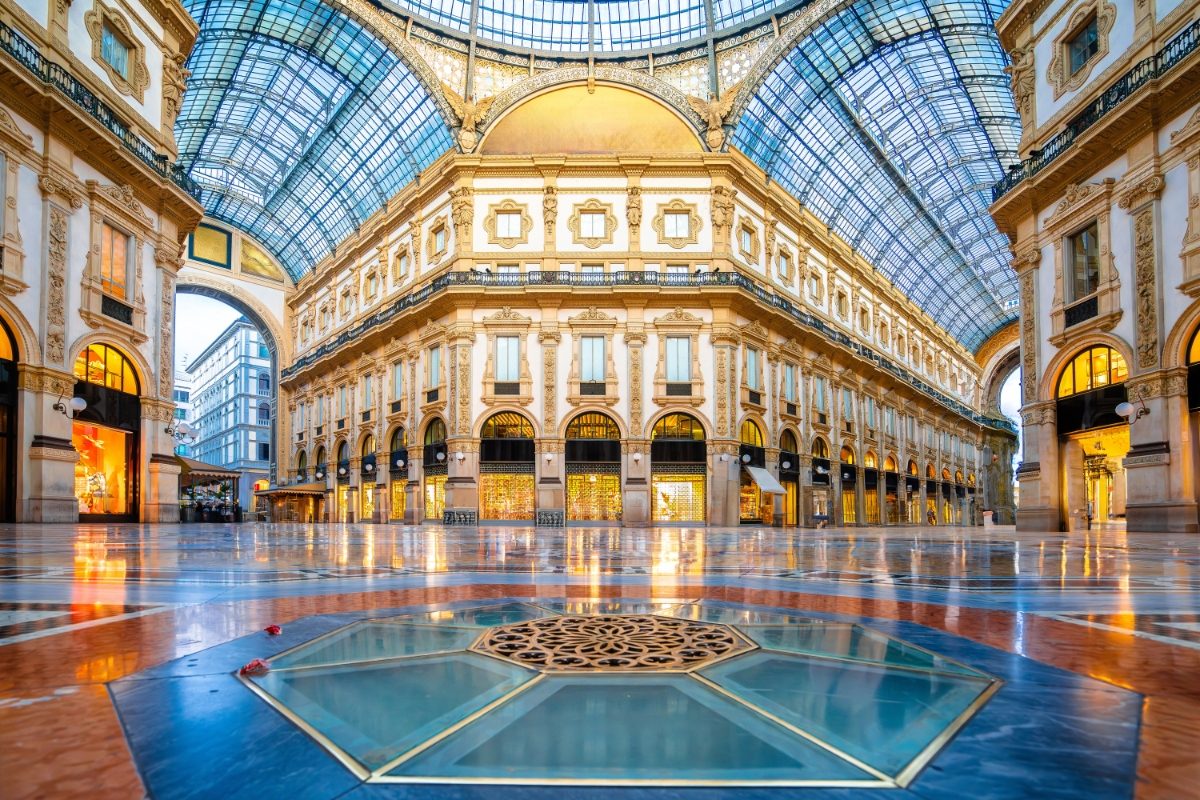
Milan’s star attraction is the enormous Duomo. This Gothic cathedral took nearly 600 years to finish! Climb to the roof for amazing city views. The Galleria Vittorio Emanuele II next door is a fancy shopping arcade with a beautiful glass dome.
Opera fans flock to La Scala, one of the world’s most famous opera houses. Even if you don’t see a show, the museum is worth a visit. It has costumes and instruments from past performances.
Soccer nuts will want to tour San Siro Stadium, home to AC Milan and Inter Milan. The stadium has 80,000 fans and a great history museum about Italian soccer.
For art, don’t miss The Last Supper by Leonardo da Vinci. You need to book tickets well in advance to see this masterpiece.
See Related: Where to Stay in Italy: Top Unforgettable Destinations for Every Traveler
Gastronomy and Dining Experiences
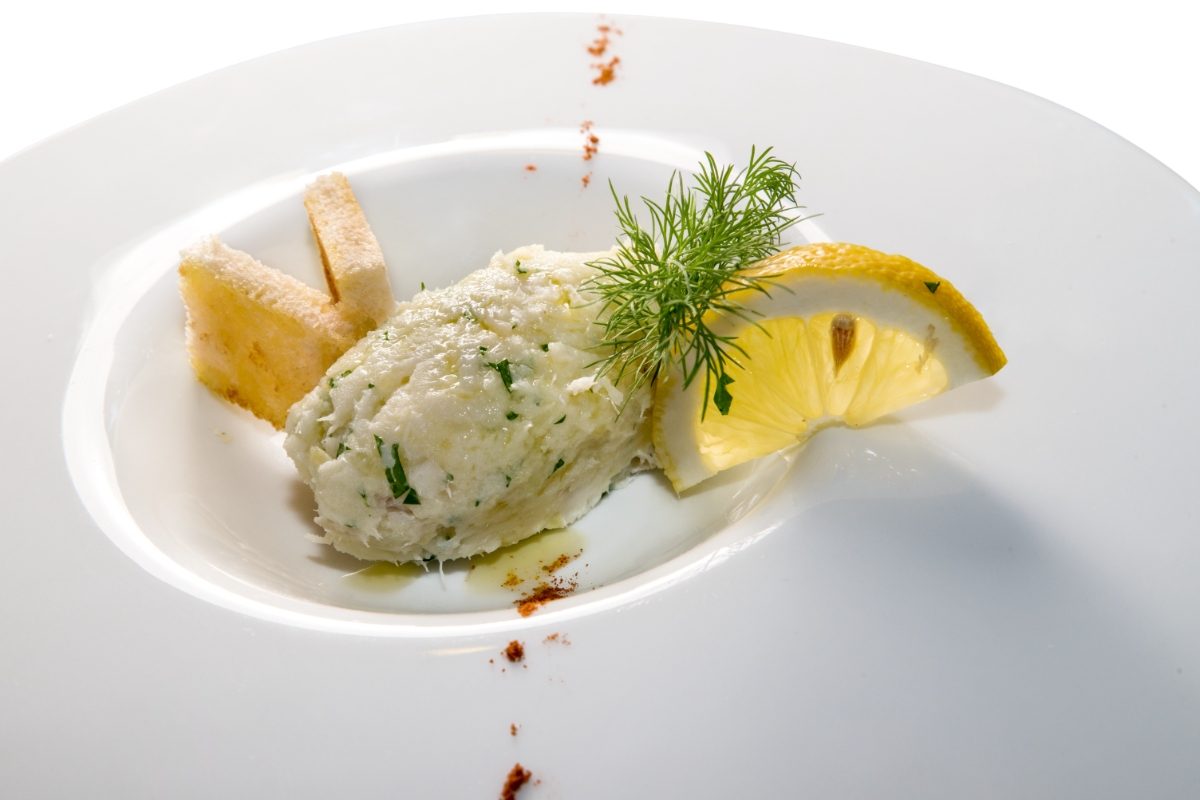
Venice and Milan offer very different flavors and dining scenes. Each city has unique culinary traditions reflecting the local culture and history.
Venetian Cuisine and Seafood
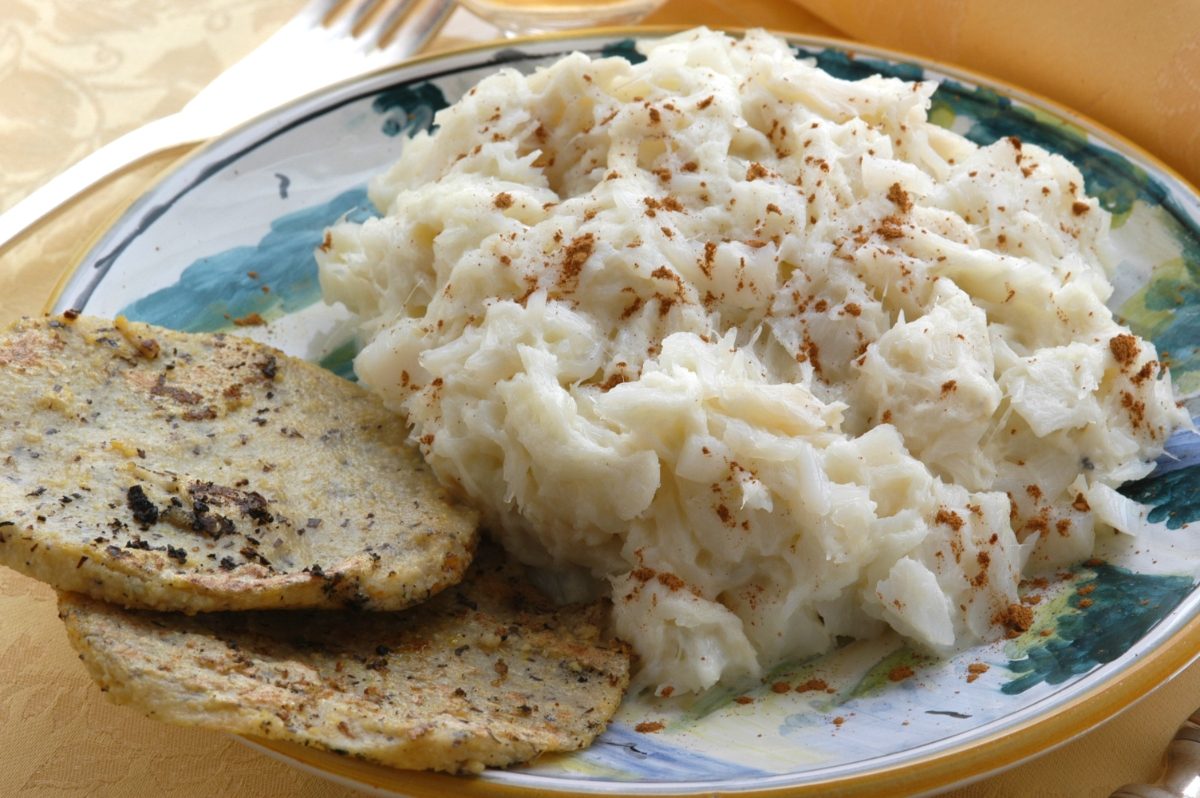
Venice’s food is all about fresh seafood and local ingredients. You’ll find lots of tasty fish dishes like baccalà mantecato (creamy salt cod spread) and sarde in saor (sweet and sour sardines).
Don’t miss trying cicchetti – Venice’s version of tapas. These little snacks are perfect with a glass of wine.
For a real Venetian experience, head to a bacaro (wine bar) in the evening. You can sample different cicchetti for just a few euros each. Some popular spots are All’Arco near the Rialto Bridge, and Cantina Do Spade in San Polo.
Seafood lovers should visit the Rialto fish market in the morning. It’s a great place to see the day’s catch and soak up the lively atmosphere.
Milan’s Fashionable Restaurants and Risotto
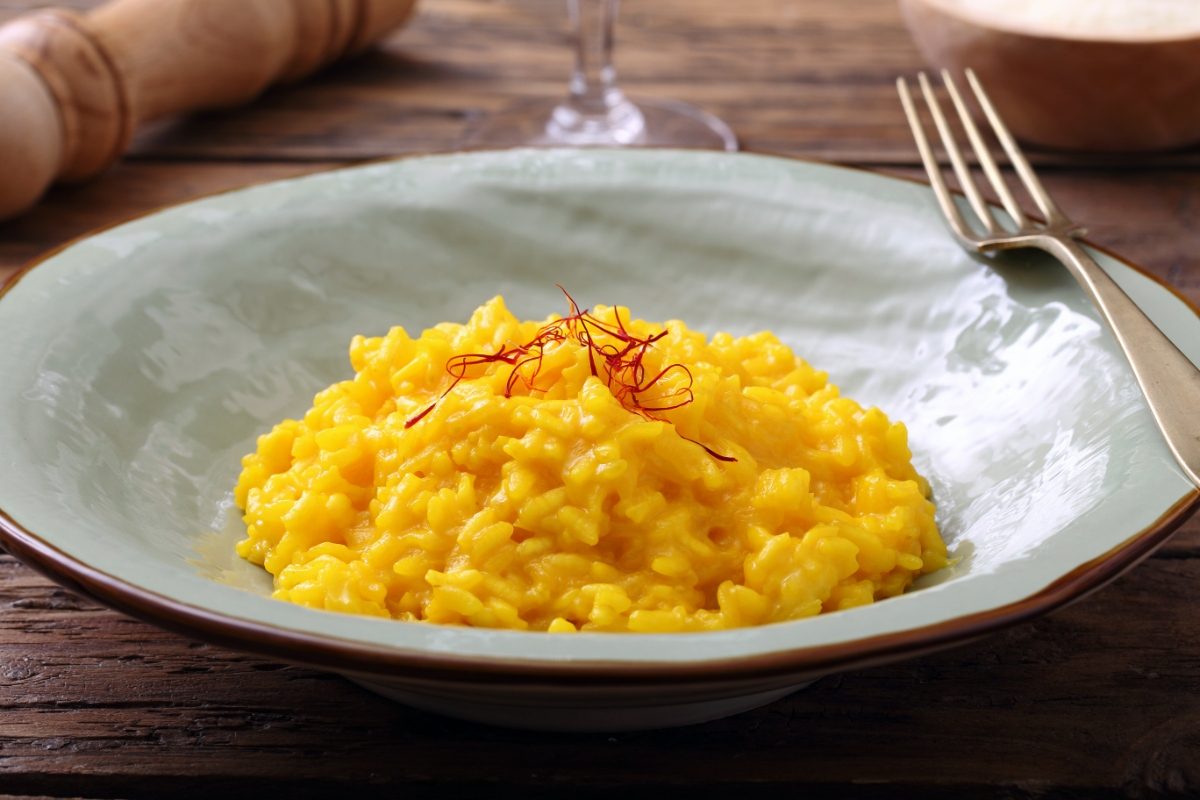
Milan’s food scene is more diverse and modern. The city is famous for its golden risotto alla Milanese, flavored with saffron. You’ll also find hearty meat dishes like osso buco (braised veal shanks) and cotoletta alla Milanese (breaded veal cutlet).
Milan’s aperitivo tradition is a must-try experience. Many bars offer a buffet of snacks with your evening drink.
It’s a great way to sample many different foods. The prices usually range from €10-15 for a drink and food.
Book a table at one of Milan’s high-end restaurants for a special meal. Places like Cracco and Seta offer innovative takes on Italian cuisine. But be prepared to spend at least €100 per person for dinner at these fancy spots.
Shopping and Fashion
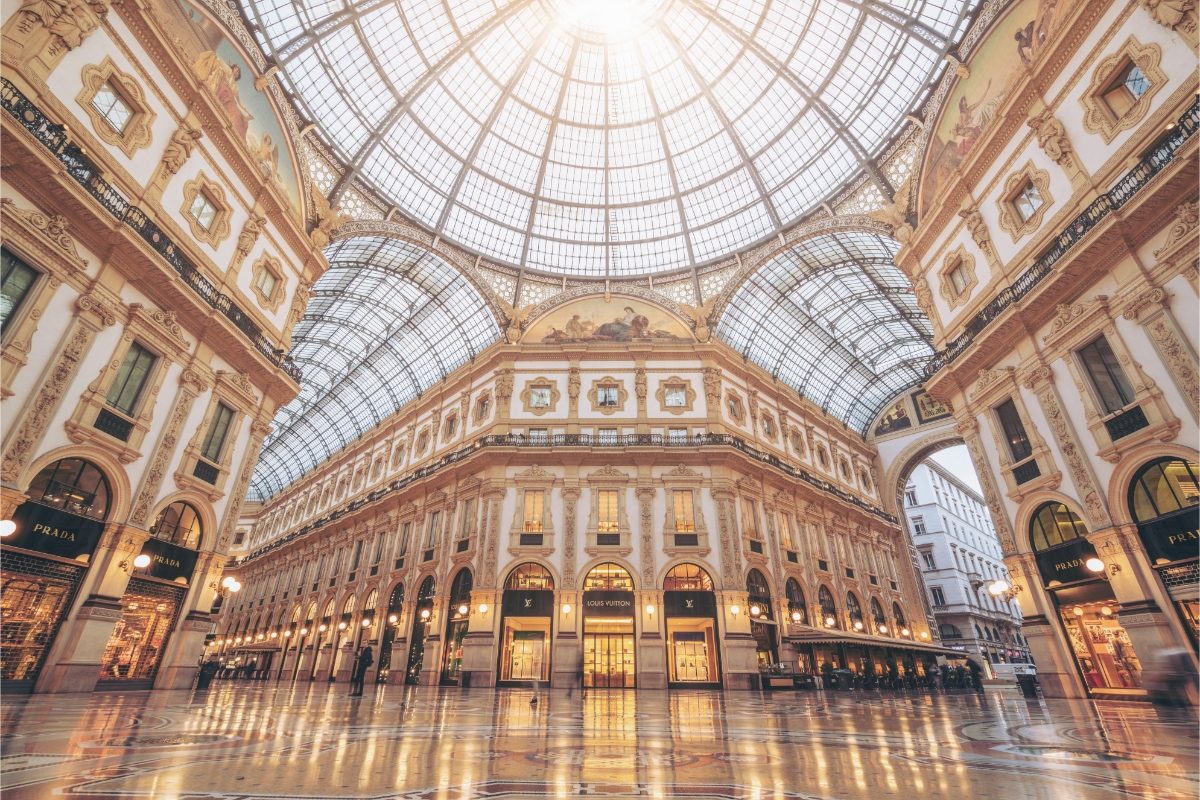
Milan and Venice offer contrasting shopping experiences. Milan shines as a global fashion hub, while Venice charms with unique artisanal goods and boutiques.
Venice’s Artistic Boutiques
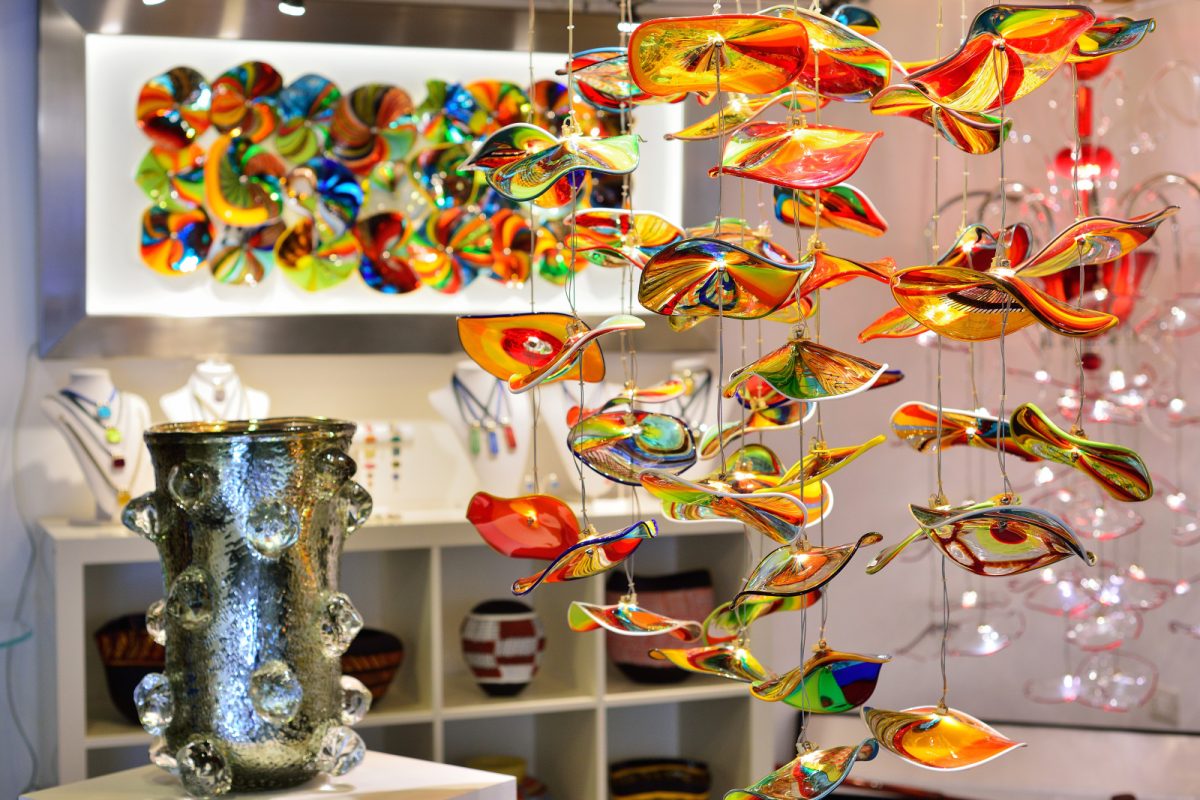
Venice’s shopping scene reflects its artistic heritage. Narrow alleys hide quirky shops selling Murano glass, Venetian masks, and handmade paper. The Rialto Bridge area bustles with souvenir stalls and local craftsmen.
For a taste of Venetian luxury, head to Calle Larga XXII Marzo. This elegant street boasts high-end boutiques and designer stores. Prices can be steep, but window shopping is free!
Don’t miss the Mercerie, Venice’s main shopping street. It links Rialto to St. Mark’s Square and offers a mix of tourist shops and local favorites. Bargain hunters should visit during the winter sales, typically in January and February.
Milan is the Fashion Capital
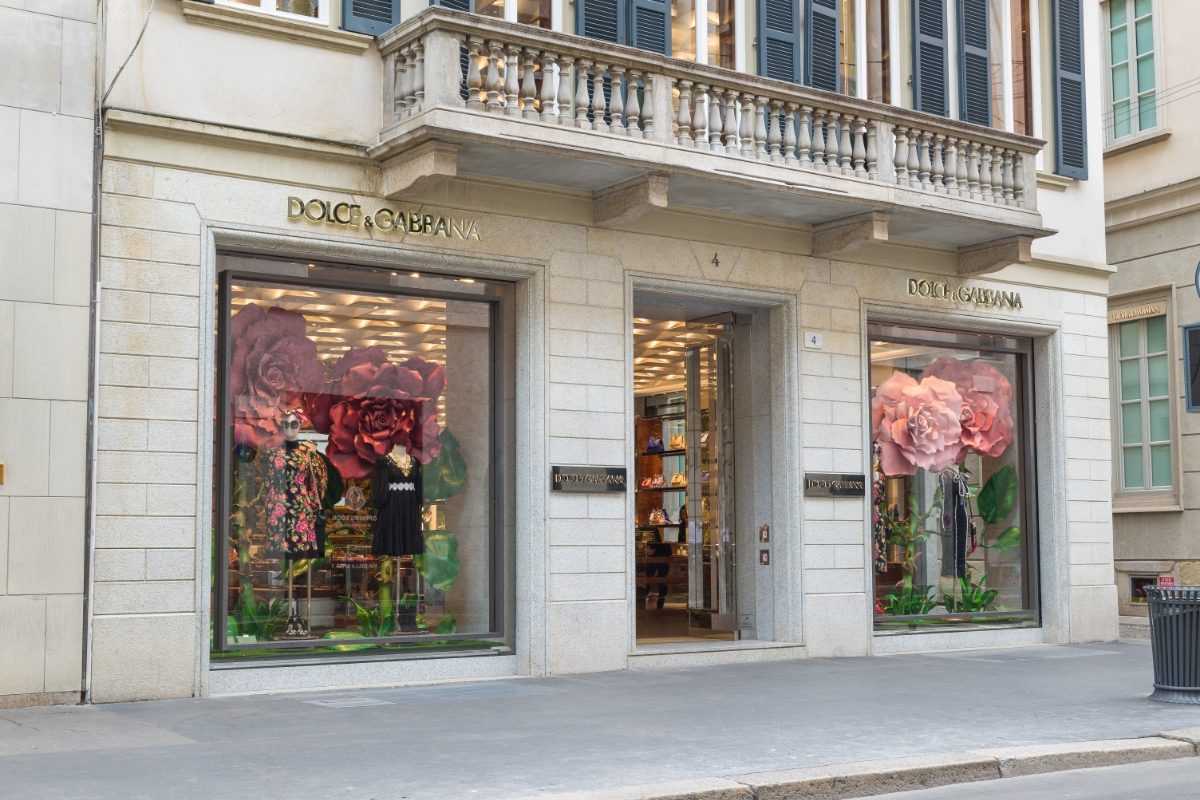
Milan is a shopaholic’s paradise. The city lives and breathes fashion, with the prestigious Milan Fashion Week drawing designers and fashionistas twice a year.
The heart of Milan’s shopping scene is the Quadrilatero della Moda. This “Golden Rectangle” includes Via Montenapoleone, Via della Spiga, and nearby streets. Here, you’ll find flagship stores of Italian and international luxury brands.
For a more budget-friendly experience, check out Corso Buenos Aires. This 1-kilometer street has over 350 shops, from fast fashion to local boutiques. Prices are more reasonable, especially during sale seasons.
The iconic Galleria Vittorio Emanuele II is a must-visit. This stunning 19th-century arcade houses luxury shops and cafes under a glass dome. Even if you’re just window shopping, the architecture alone is worth the trip.
Accommodations and Stays
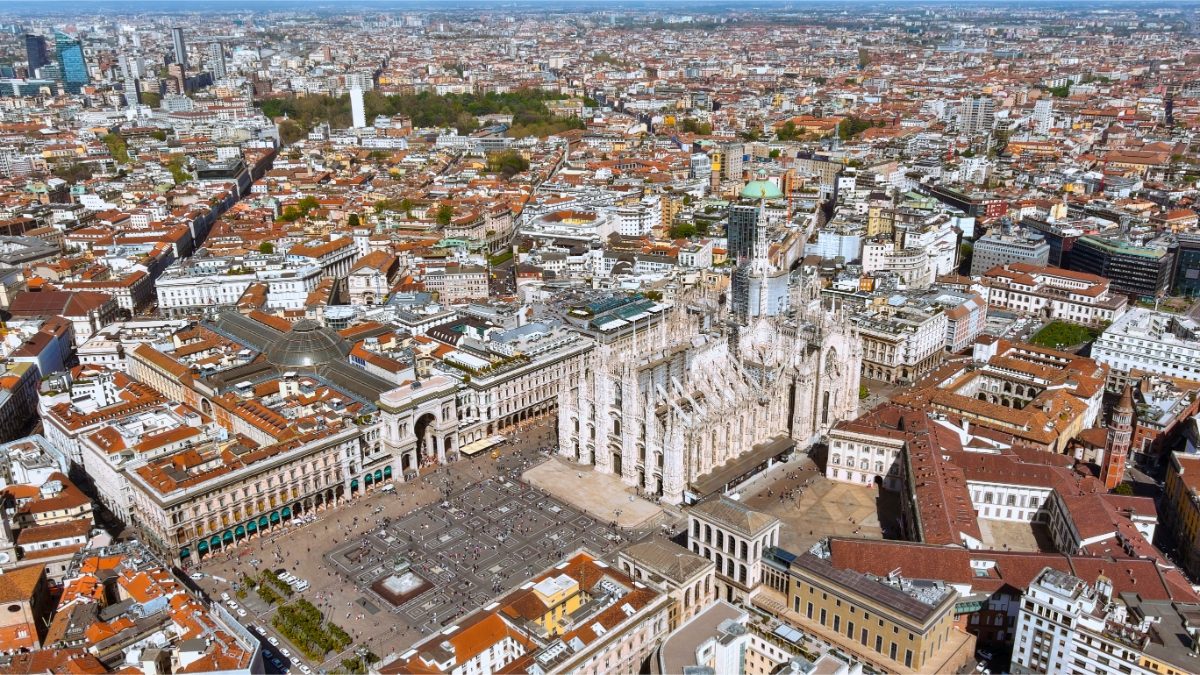
Venice and Milan offer a range of lodging options to suit different tastes and budgets. From opulent hotels to charming family-run guesthouses, both cities provide unique experiences for travelers.
Luxury Hotels in Venice and Milan
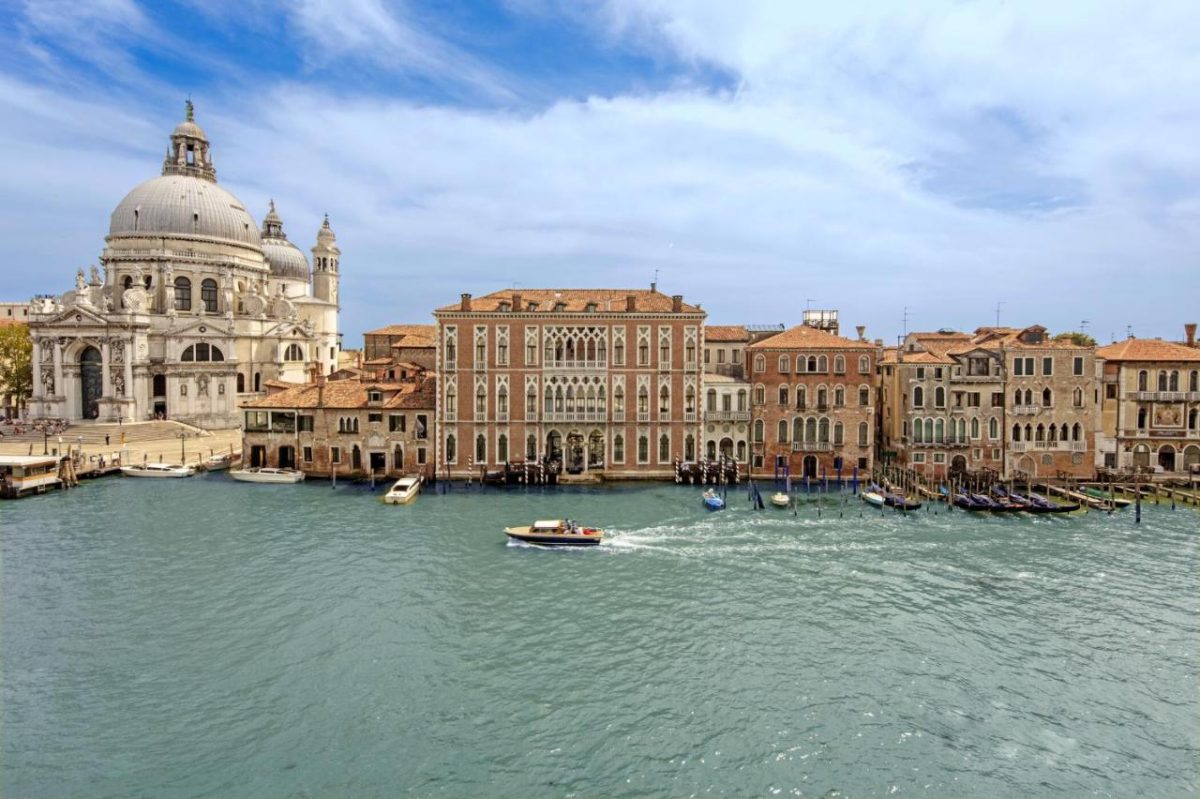
Venice boasts some of Italy’s most lavish hotels. The Gritti Palace, a 15th-century palazzo on the Grand Canal, oozes old-world charm.
Rooms start at €800 per night. For a modern twist, try the JW Marriott on its private island.
Milan’s luxury scene is equally impressive. The Armani Hotel Milano, designed by Giorgio Armani himself, offers sleek rooms from €750. The Bulgari Hotel Milan features a private garden oasis in the heart of the fashion district.
Unique Venetian and Milanese Stays for Families and Couples
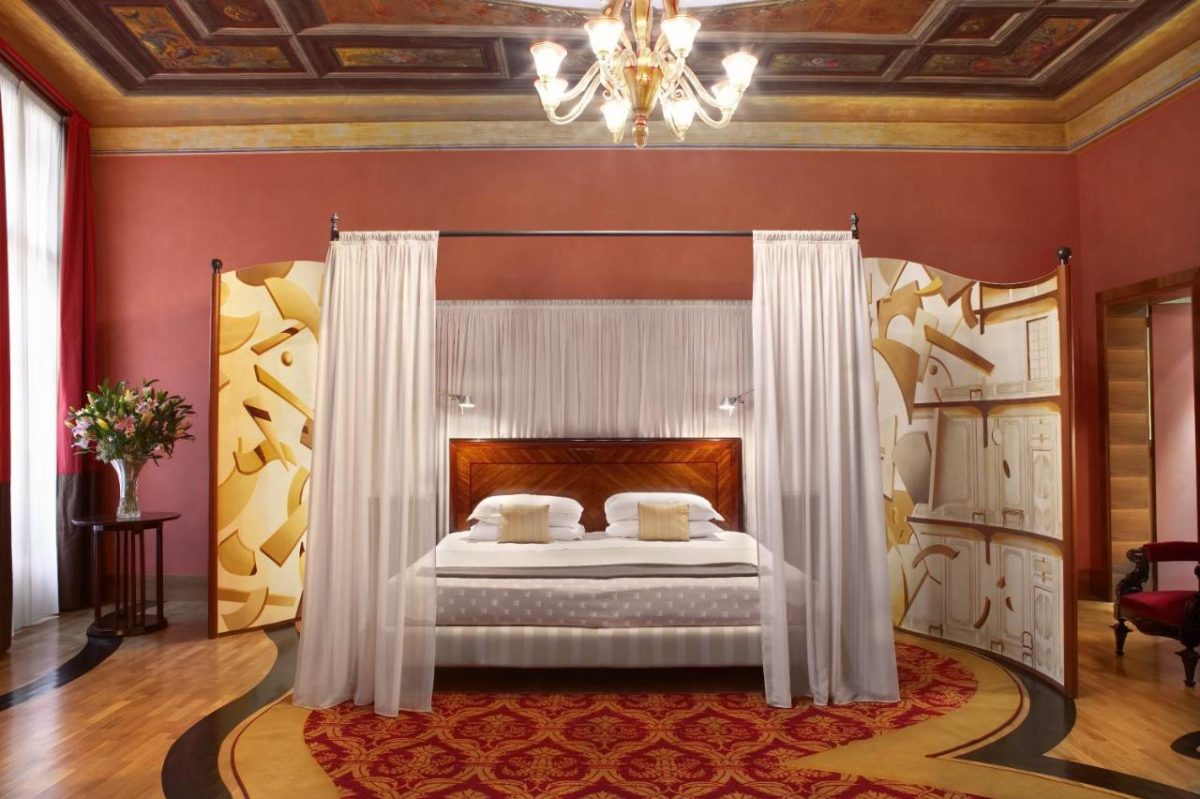
Venice’s family-friendly hotels often occupy historic buildings. The Hotel Saturnia & International, near St. Mark’s Square, welcomes kids with special amenities. Couples might prefer Ca’ Maria Adele, a romantic 12-room hideaway in Dorsoduro.
Milan also caters well to families. The Starhotels Echo has spacious rooms and a kid’s corner.
For a romantic getaway, try Château Monfort, with its fairytale-inspired decor. Don’t miss the rooftop bars in both cities—perfect for sunset drinks with a view!
See Related: Iconic Honeymoon Destinations in Italy: Romance Across the Boot
Transportation and Mobility
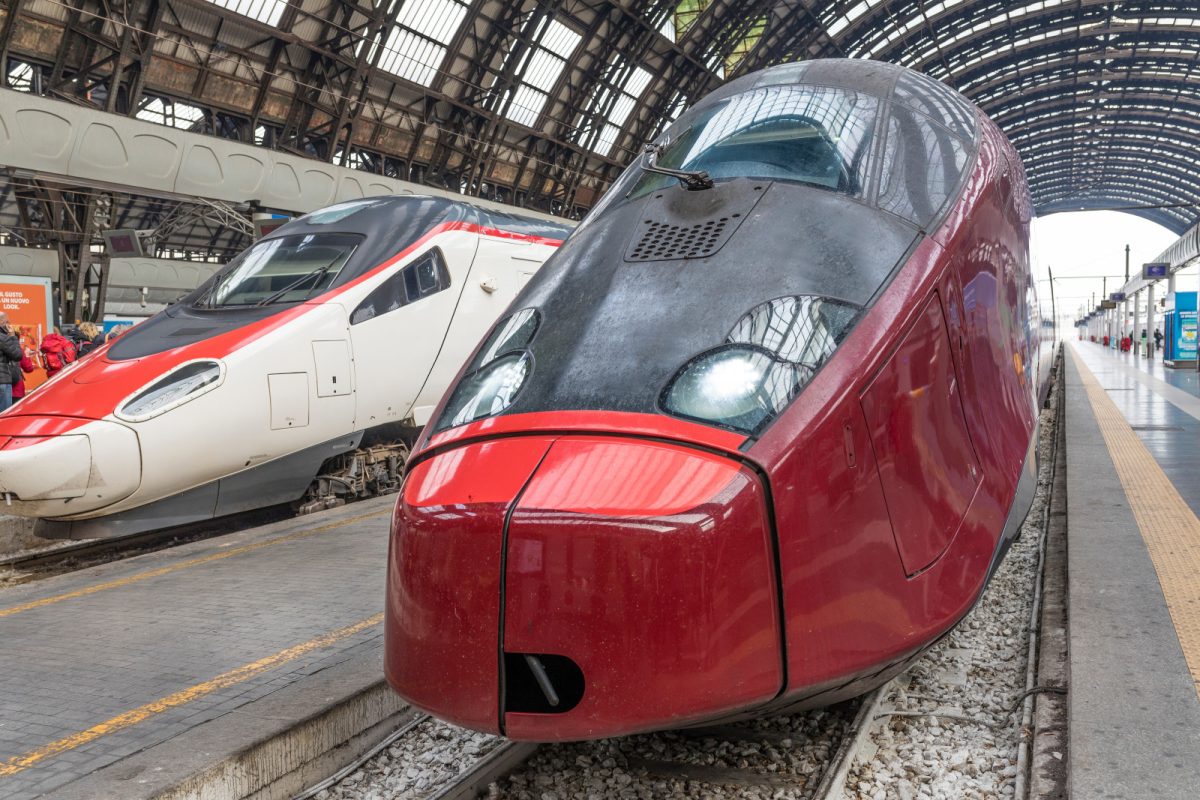
Getting around Venice and Milan offers different experiences. Venice’s waterways create a unique transport system, while Milan boasts modern public transit and stylish design.
Venice’s Vaporettos and Gondolas
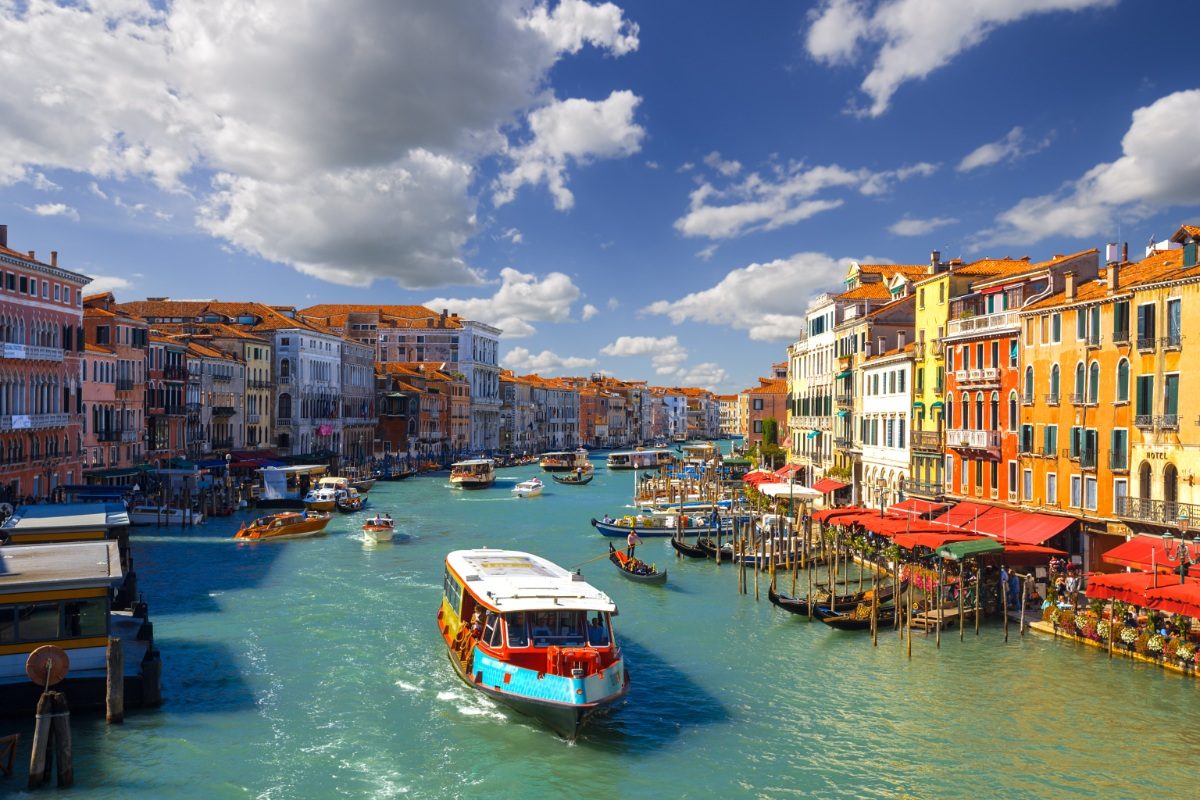
Venice’s primary public transport is the vaporetto. The water buses cruise the Grand Canal and outer islands.
A single ride costs €7.50. However, multi-day passes save money for longer stays. Tip: avoid rush hour when boats get packed!
Iconic gondola rides offer a romantic (if pricey) way to see Venice. Expect to pay €80-100 for a 30-minute private ride. Some locals say it’s touristy, but gliding under bridges and past palazzos is magical.
Water taxis zoom across the lagoon faster but cost €50-70 per trip. For a fun, free ride, hop on the traghetto gondola ferry, which crosses the Grand Canal for just €2.
Milan’s Public Transport and Design
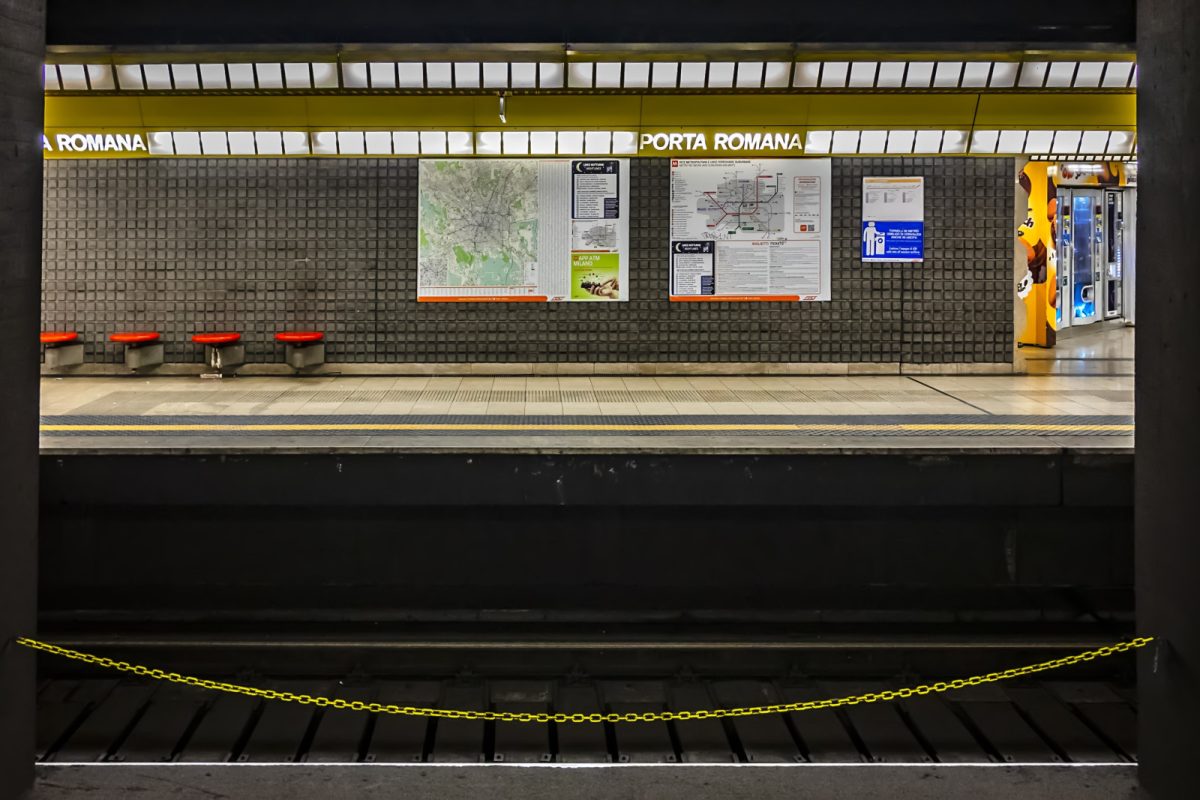
Milan’s extensive metro, tram, and bus network make getting around a breeze. A 90-minute ticket costs €2, while a 24-hour pass is €7. The sleek red trams add retro flair to city streets.
Milan’s subway stations showcase Italian style. Check out the art-filled Cadorna station or the futuristic Garibaldi. Fun fact: Line 5’s driverless trains have panoramic front windows!
Bike sharing is big in Milan. Grab a BikeMi bike for €4.50/day to zip between sights. Or join locals strolling the Navigli canals, less crowded than Venice’s waterways.
For soccer fans, take the metro to the legendary San Siro stadium. Match days are crazy, but tours run year-round.
Seasons and Best Time to Visit

Venice and Milan offer unique experiences throughout the year, but timing your visit can make a big difference. Each city has ideal periods for sightseeing, events, and enjoying the local atmosphere.
Ideal Seasons for Exploring Venice
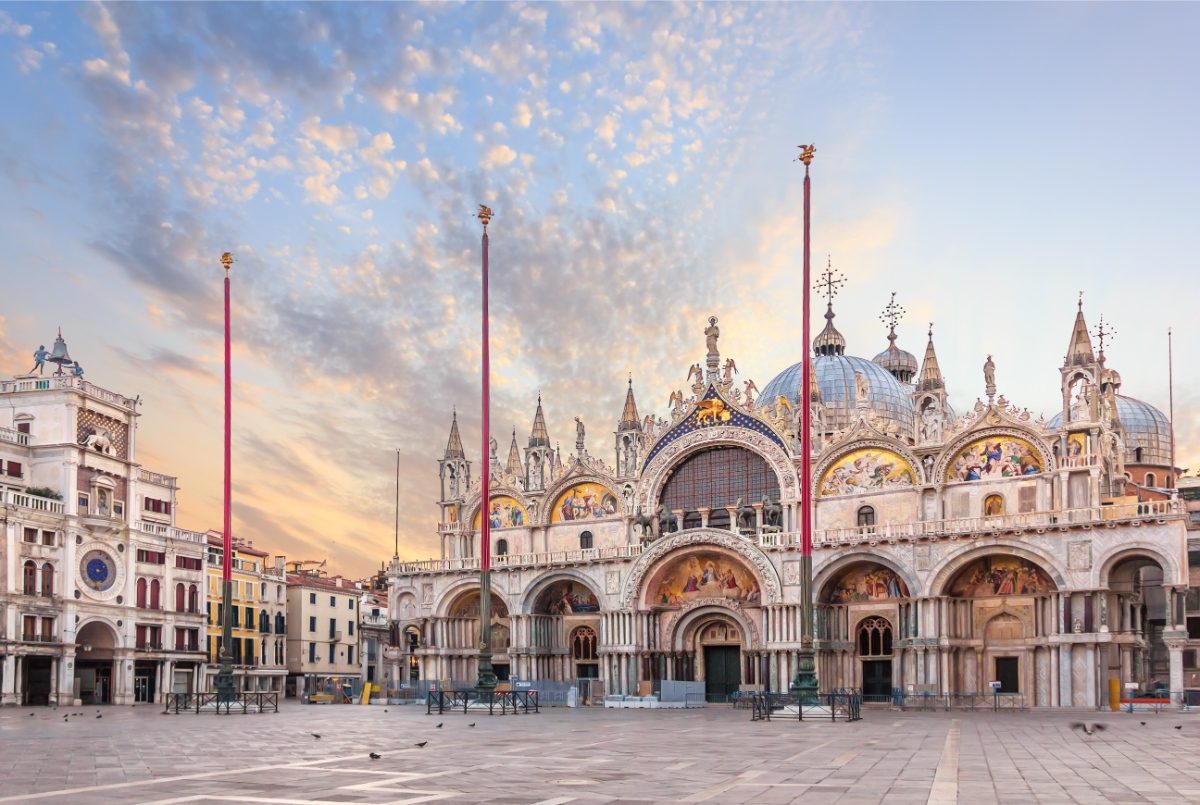
Spring and fall are magical in Venice. April and May bring mild temps and fewer crowds before the summer rush.
The city bursts with color as flowers bloom along canals. September and October offer warm days perfect for gondola rides.
Avoid August if possible – it’s hot, humid, and packed with tourists. Winter can be chilly and damp but also romantic and misty. February’s Carnival is a spectacular sight, with elaborate masks and costumes filling St. Mark’s Square.
Prices spike in summer and during Carnival. If you’re visiting, then book early. For bargains, try November or January, when hotels slash rates.
Optimal Travel Period for Milan
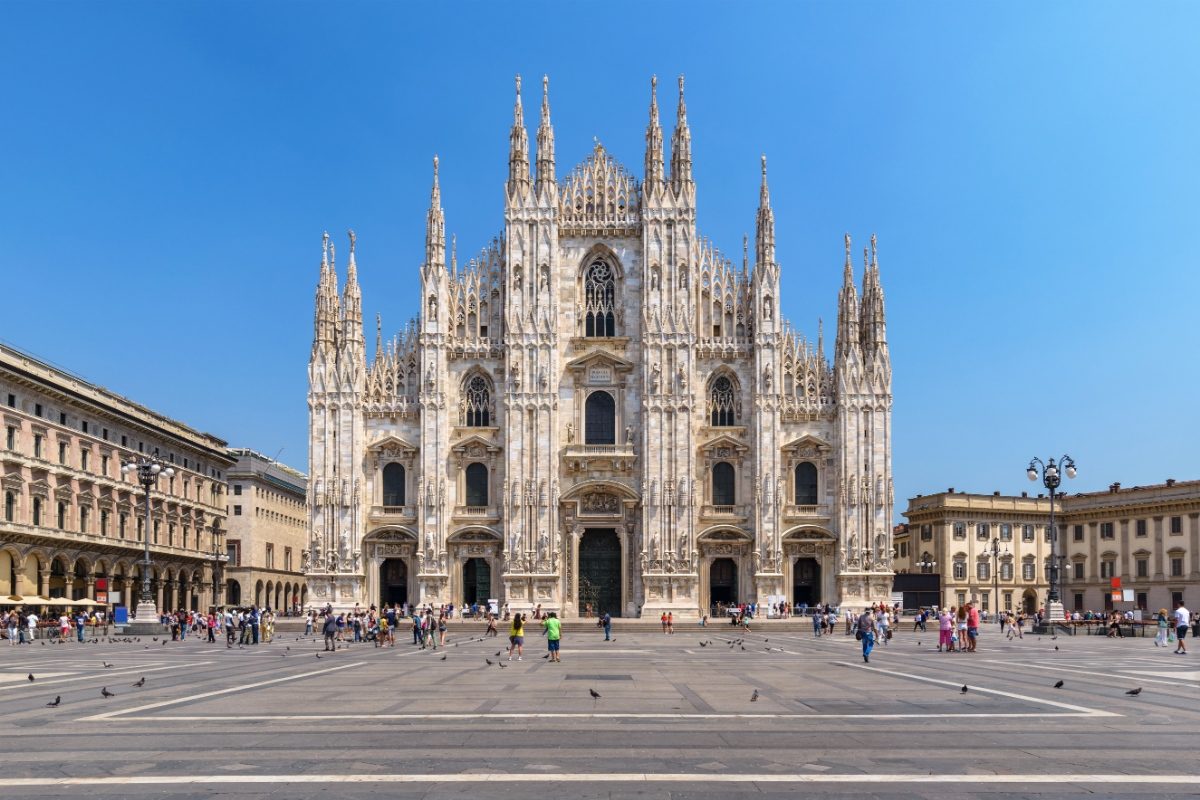
Milan shines in spring and fall. April-May and September-October have pleasant weather for exploring. In February or September, you’ll catch the buzz of Fashion Week—a thrilling time to see the city at its most stylish.
Summers can be sticky, but Milan empties in August as locals flee to the beach. Many shops and restaurants close then. Winter gets chilly, but the city looks festive with twinkling lights and Christmas markets.
Avoid visiting during big trade fairs – hotels fill up, and prices soar. Check the event calendar and plan accordingly. Aim for the best deals in July or November when business travel slows.
See Related: Two Weeks in Italy Itinerary: The Perfect Family Adventure
Frequently Asked Questions
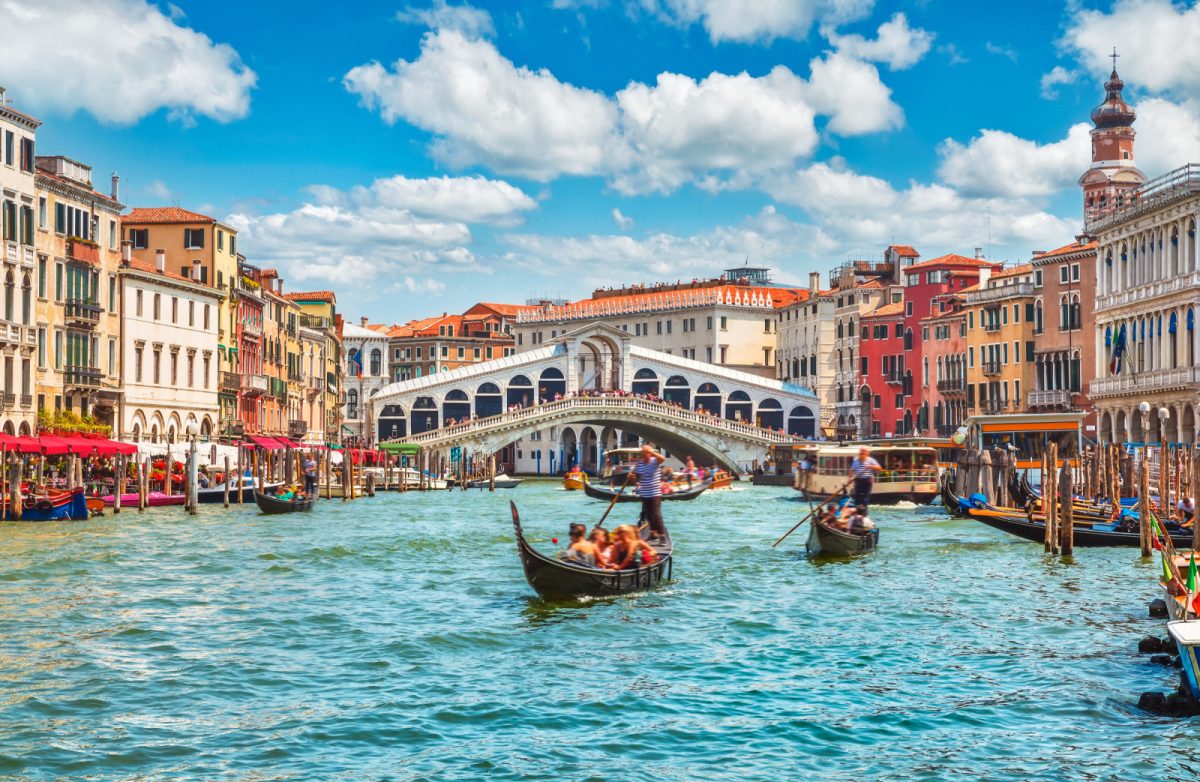
Travelers often have questions when deciding between Venice and Milan. These two Italian cities offer very different experiences for visitors.
Which is better for tourists, Venice or Milan?
Venice is a top pick for tourists who love history and unique sights. Its canals, gondolas, and old buildings make it one-of-a-kind.
Milan shines for those into fashion, shopping, and big city life. It’s got famous art and cool modern areas too.
What are the key differences between Venice and Milan for a traveler?
Venice is smaller and built on water. It’s all about walking or boats – no cars! The views are amazing, with lots of bridges and old palaces.
Milan is bigger and busier. It’s got metros and trams to get around. You’ll see fancy shops, a giant cathedral, and modern buildings.
How does the cost of visiting Milan compare to Venice?
Venice can be pricier, especially for hotels near St. Mark’s Square. A 30-minute gondola ride costs about €80.
Milan has more budget options, but fancy areas like the Duomo can be costly. Meals in Venice often cost more due to tourist prices.
Can Venice be experienced as a day trip from Milan effectively?
It’s doable but rushed. The train takes about 2.5 hours each way, so you’d spend maybe 6-7 hours in Venice.
That’s enough to see St. Mark’s and take a quick gondola ride, but you’d miss out on the quiet charm after the day-trippers leave.
What should visitors expect when visiting Milan or Venice in the winter months?
Both cities get cold and can be foggy. Venice might flood (called “acqua alta”). Pack warm clothes and waterproof boots for Venice.
Milan gets fewer tourists, so some sights have shorter hours. But both cities are magical at Christmas with pretty lights and markets.
How do Venice and Milan contrast in terms of cultural and historical offerings?
Venice wins for its old-world charm. The city is like a museum, with places like the Doge’s Palace.
Milan has some old stuff, too, like the Last Supper painting. But it also has more modern art scenes and cool new areas like the Porta Nuova district.

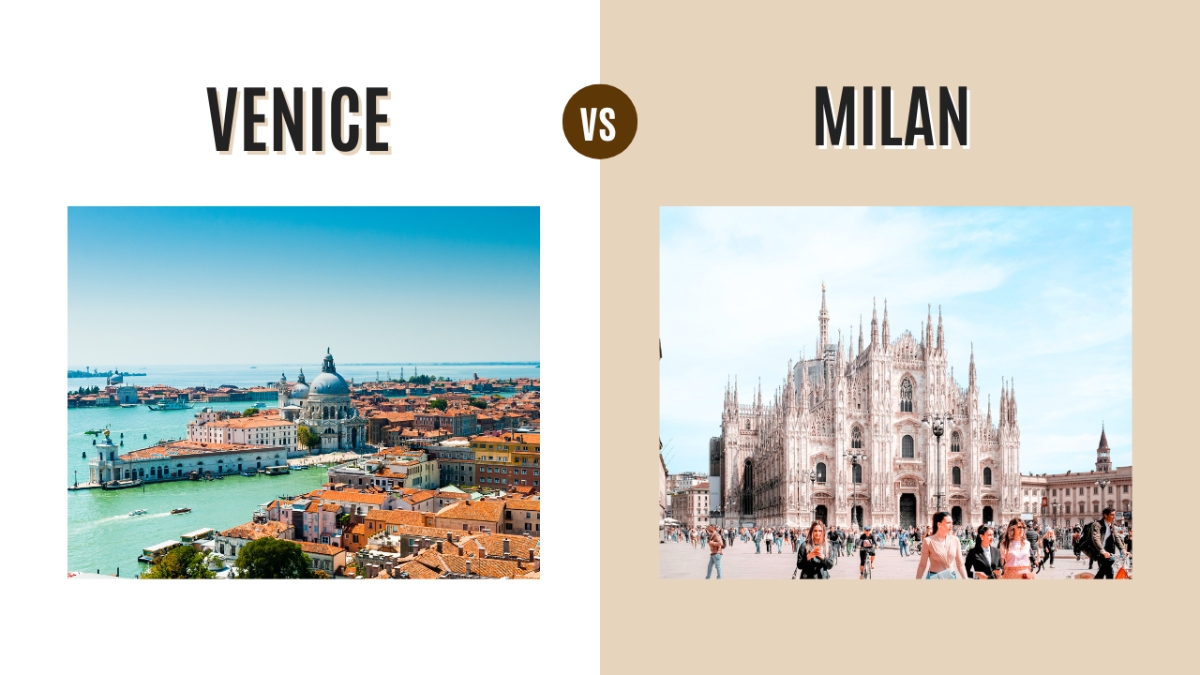
0 Comment